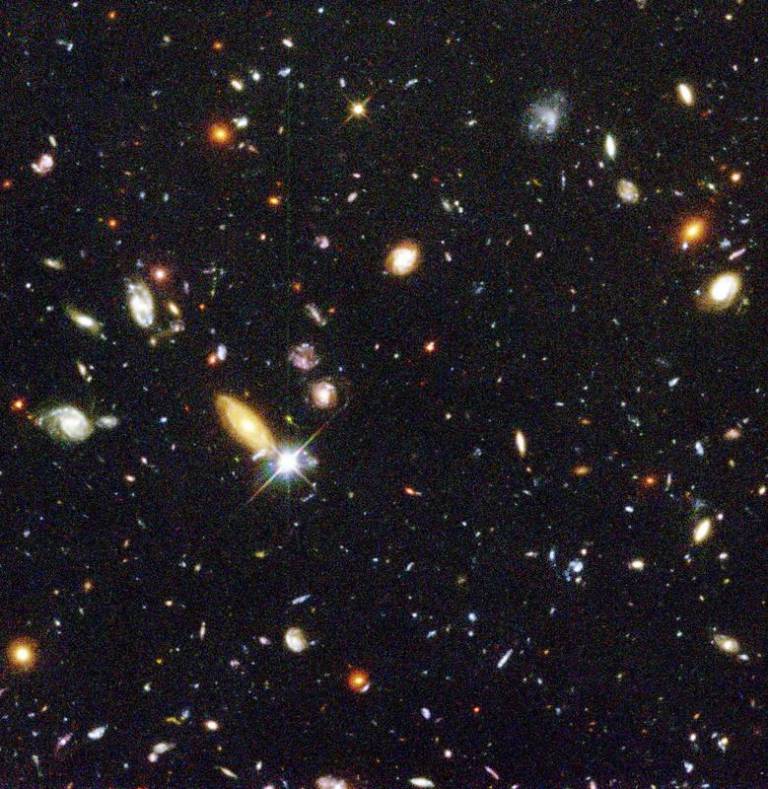Estimating the distance to an astronomical object is a fundamental problem in Astronomy. Distances to galaxies are usually estimated from their redshifts (z) derived from a high resolution spectrum. The alternative is the photometric redshift (photo-z) technique, using the colours of a galaxy in a selection of medium or broad-band filters as a crude approximation of the galaxy's spectral energy distribution (SED) in order to find its redshift and spectral type. While photo-z estimation may sound like just a 'technical' issue, it turns out to be one most of the critical factors in measuring dark energy. The fractional error in the dark energy equation of state w is roughly 5 times the fractional error in the cosmological distances that enter the calculations.

Credit: NASA, ESA, and S. Beckwith (STScI) and the HUDF Team
Reliable photo-z are essential for deriving accurate cosmological parameters from the new generation of imaging surveys. There are two common approaches to the problem: Template methods and Training methods, as well as hybrid methods. We have developed an innovative Training method based on artificial neural networks, ANNz which we have made publicly available. Essentially, an ANN takes a set of fluxes in different filters for each galaxy, applies some non-linear function, and outputs the estimated redshift and its uncertainty. In recent years, the photo-z research team at UCL has produced a string of papers on photo-z and its applications. These papers strongly influenced the design and survey strategy of both DES, VISTA and Euclid.
Using ANNz we also constructed the largest ever photo-z catalogue, MegaZ-LRG, including 1.5 Million Luminous Red Galaxies selected from SDSS. We have used it to derive the cosmological baryonic fraction, halo model parameters and neutrino mass.
 Close
Close

